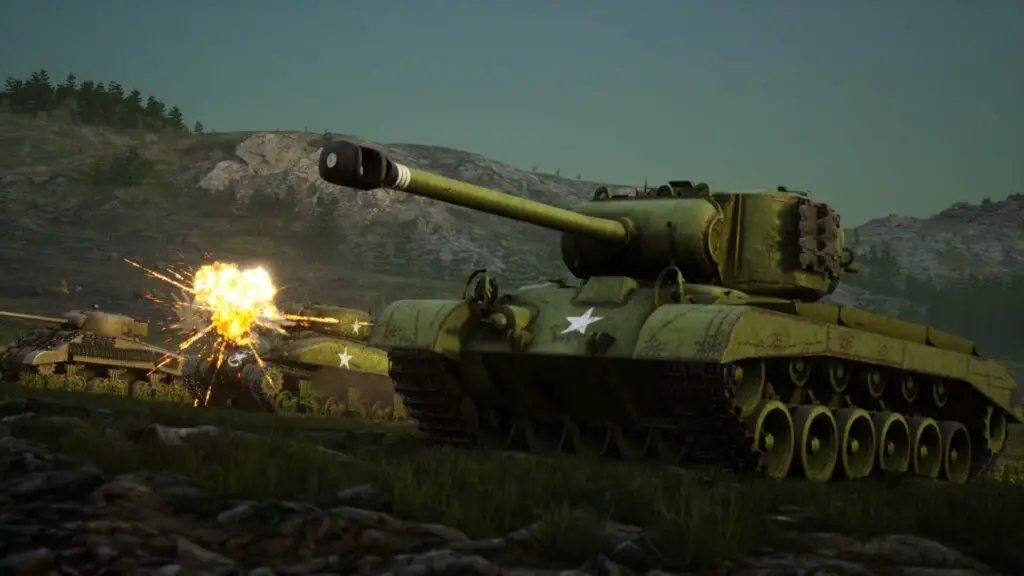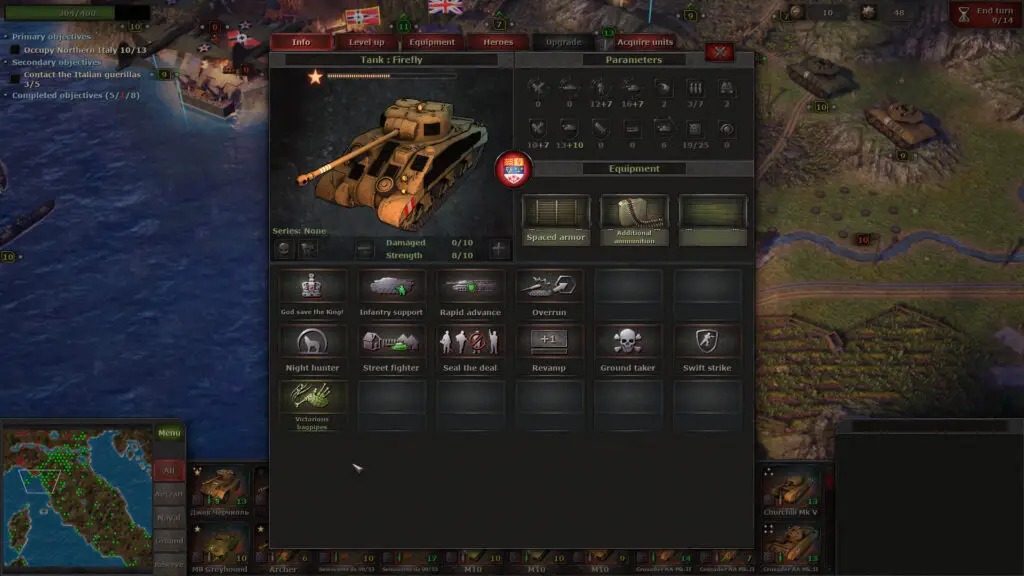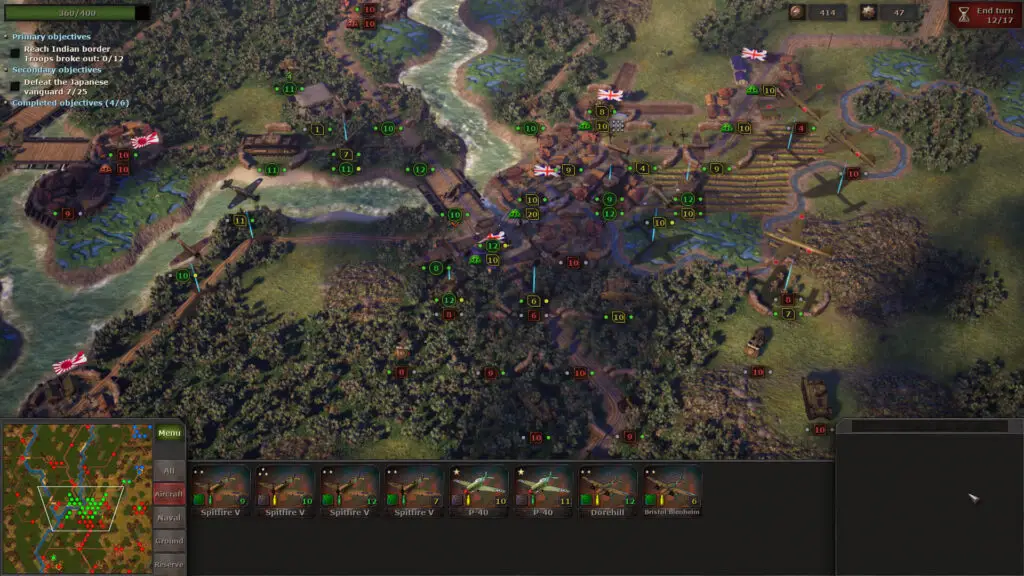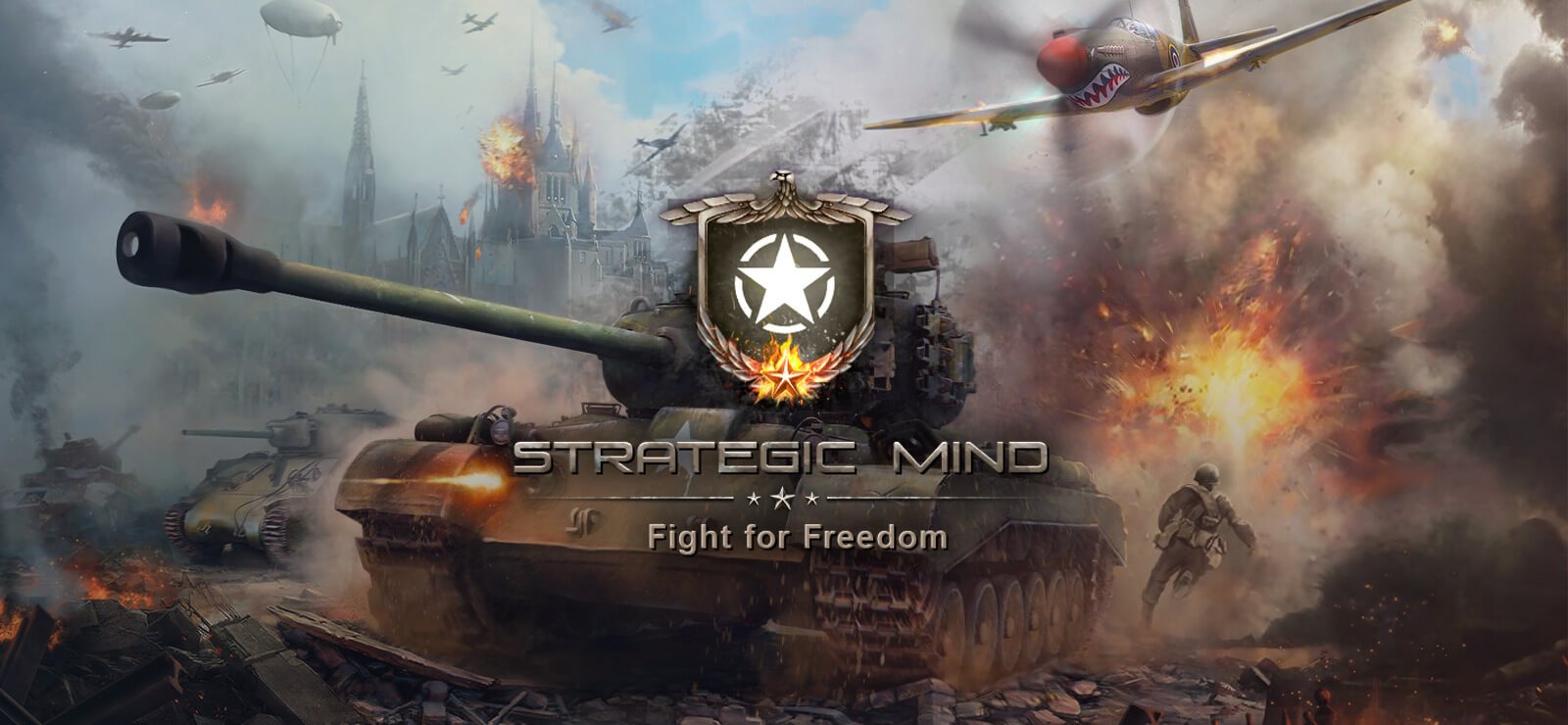Owing a touch of inspiration to the classic Panzer General series and its five star cousins, Strategic Mind: Fight for Freedom (hereafter referred to as SM:FF) is the latest in the growing series from the Kiev based team behind the previous Strategic Mind games, including a review for Spectre of Communism on this very site!

For those who are new to the Panzer General / Strategic Mind series, here is a brief recap on how the series works. Strategic Mind is a turn-based strategy game set in WW2 where you’ll command a variety of period and faction appropriate units ranging from tanks, fighter aircraft and poor infantry all the way to some rather more unusual units such as battleships, anti-air craft guns and even (in later scenarios) jet aircraft. In the campaign game, you’ll have a group of core units, marked with a green strength score, that will carry over between battles, gaining experience and equipment. If they get wiped out, they are gone! You’ll also be granted yellow tagged units that are for that scenario only but don’t just throw their lives away as many scenarios will have an “acceptable losses” parameter which could cost you the mission.
Now in this iteration, SM:FF will see you play as either the British or the Americans during the Western Front, one of the most popular and well represented fronts in all of wargaming history. In each mission in a long campaign, you’ll be treated to a cut scene as various historical characters, often replete with rather strange voice acting, will outline the strategic picture and then continue to offer advice and objectives when you are in mission.
SM:FF has a deep and granular approach to the battlefield, with spotting, supply, entrenchment and even a day and night cycle represented in game. All of your units have a part to play and they all have their strengths, weakness and uses. The humble scout armoured car will often prove as valuable as the more powerful armoured units as it can spot ambushes and prevent your more expensive units from walking or driving straight into a trap.

Combat plays out in a fairly familiar fashion, with a combat preview displayed before you click to attack. Damage is divided into lethal which represents permanent strength loss (dead men or destroyed vehicles) whilst non-lethal will heal if the unit has time to rest. This is an interesting approach and works quite nicely as units can recover if they are given time and space to do so, whilst a unit under constant attack will quickly wither away to nothing.
Still, you’ll need to plan your attacks carefully. Recon units will reveal hidden enemies, sappers will need to clear minefields and the hidden enemy artillery that will offer fire support, battering your units before they attack. Equally if you’d planned to fly in a squadron of Lancaster’s to attack the area, make sure you’ve neutralised any anti-aircraft batteries that will not only do damage but cancel your attack.
Here the sheer range of options and the granularity of the game comes into play as units can be upgraded, gain new skills and be given new types of equipment which can be swapped out for different assignments. For example, an infantry unit can be given a flamethrower for digging out fortifications. You can also add historical “heroes” to a unit, hugely improving their capabilities which is a fun touch.
You can also see changes in the weather which will affect combat damage, spotting ranges and unit movement. Also, every third turn is a night turn where spotting and combat effectiveness is hugely reduced without specific skills or upgrades. I generally used night turns to manoeuvre units and resupply but you may seem some chaotic night battles break out in your game!
The campaign is based on the historic WW2 Western front and therefore you’ll see familiar battles such as Dunkirk, D-Day and Kasserine Pass. You may also see a few less familiar battles such as the Saar offensive and the Battle for Norway. AI controlled allied forces will do their best to support you and the AI is generally pretty good on both sides.
The missions do come with a fair amount of scripting and you may see new enemy units spawn in and feel like the game has become unbalanced. Of course, if you play the scenario again, you’ll know this unpleasant surprise is coming but it can be a bit jarring at times and makes it very difficult to plan, which is a significant issue in a game where having a tight plan is so important.

There are a huge web of systems and factors to keep on top of and the game is not easy, even for a veteran and you’ll find yourself tripping over here and there. The game does have an “Undo” option but you may well still make a few errors and lose good units in a senseless move. The unit pathing isn’t very good and you’ll want to keep a close eye on where they plan to move before you commit to a move.
The game has nice unit graphics and a colourful and highly detailed map. This is both a blessing and a curse as the sheer volume of symbols, graphical overlays and units can become quite cluttered at times and there was no “Next Unit” selector that I could find which means you can lose track of units at times which can be annoying. A simple prompt stating “you have units that haven’t moved” would be helpful!
The UI is a muddle as well and feels a bit overpacked at times, with multiple clicks required to get at all the data you need. You’ll need to use the middle mouse to check if this is the infantry unit that has a sapper attached, for example and there’s nothing graphical to show you.
The enemy AI is tough and you’ll find yourself tested even on lower difficult levels and it doesn’t appear to cheat, beyond the scripted events.
Whilst the graphics and sounds for the game are quite good, the voice acting is a wild mess, with some stiff performances and some voice reads that do not sound like the right nationality. The unit acknowledgments get annoying very quickly and do not really add to the immersion in the game.







